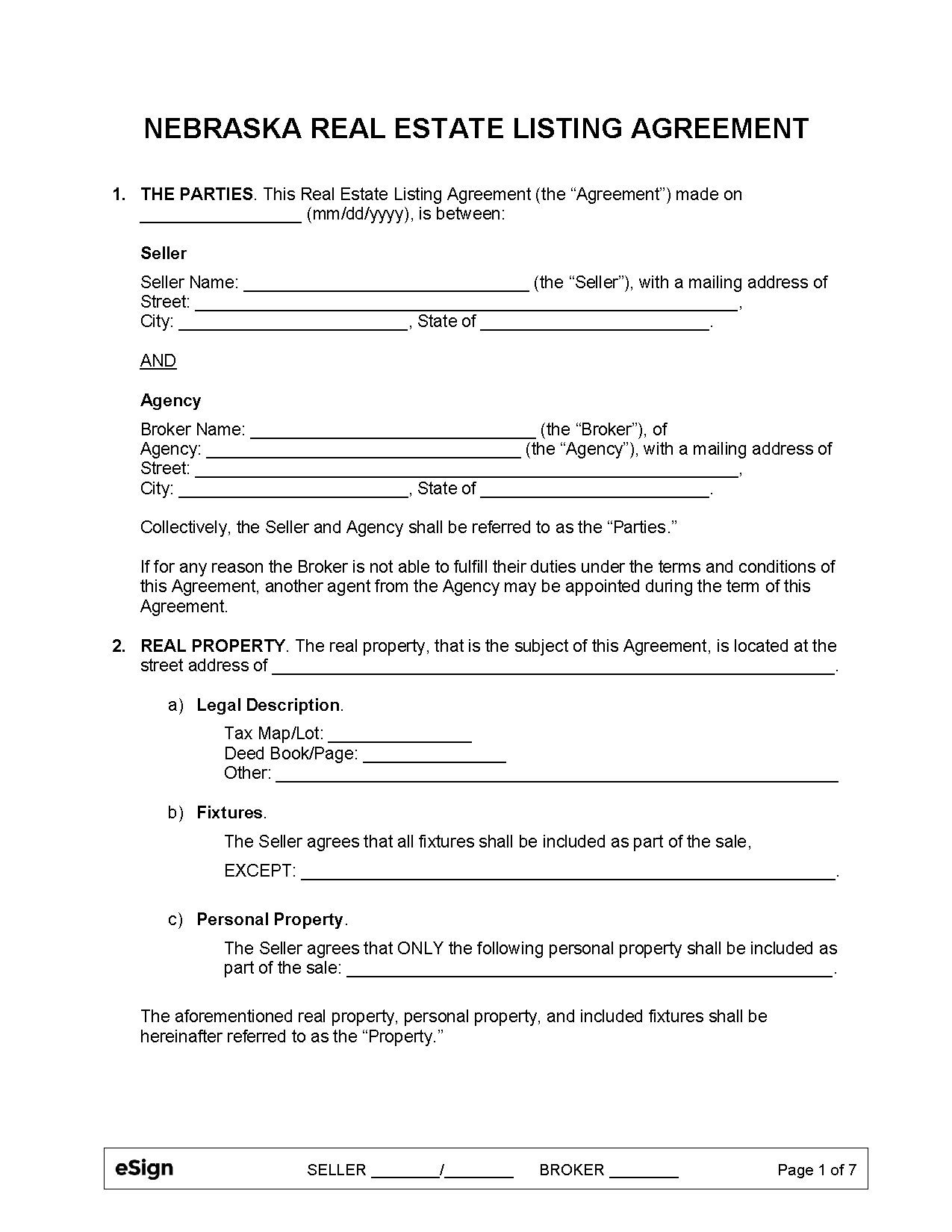The licensee may receive exclusive selling rights as the sole party marketing the property or exclusive agency rights, which allow the owner to independently obtain a buyer without any commission owed to the licensee. If the licensee is granted an “open listing” right-to-sell, the owner retains the right to sell independently as well as appoint additional agents into similar agreements.
- Dual Agency (§ 76-2419) – Dual agency representation is permitted in Nebraska provided the licensee receives informed consent from both parties.
- Purchase Agreement – This legal contract is used in the negotiations of a real estate transaction and transfers the property title of a home from the owner to the purchaser.
Contents |
Disclosures / Waivers (3) |
| 1) Agency Disclosure Information
A form disclosing the duties of an agent is required to be presented by the real estate licensee upon their first meeting with a potential client. The disclosure form is used to inform the client of the available options and does not enter them into any contractual obligations. |
| 2) Dual Agency
The agent can represent buyer and seller to a transaction if both parties provide written consent and are informed of the agent’s duties and responsibilities. A dual agent cannot disclose confidential information between the two parties, such as information that may affect the buyer or seller’s negotiating position.
|
| 3) Property Disclosure Statement
All material facts concerning a property for sale, including those that may lower its value and sale price, must be disclosed to the buyer via a written statement. The statement must detail the current condition of the property and its systems, as well as any previous adverse occurrences, such as floodings, infestations, or property violations.
|

